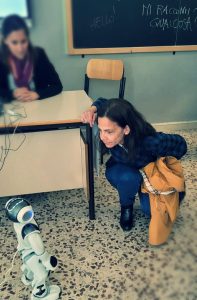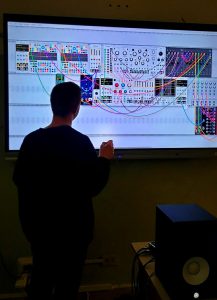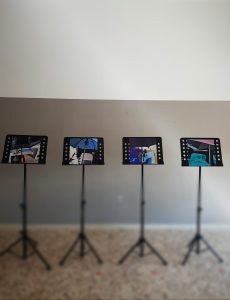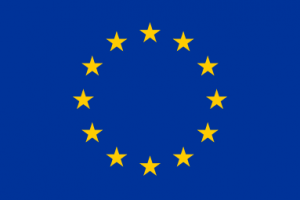Despite the difficult weather conditions, last Thursday (18/05/23) the A. Einstein high school in Rimini (Italy) was able to organise the final exhibition at the end of the “AI atelier”, an interdisciplinary laboratory and extra-curricular activity designed by a group of five teachers and inspired by FEDORA’s themes and principles. The activity addressed the relationship between art, creativity, and artificial intelligence with the "same philosophy" of the Quantum Atelier project: create a space in which to experience an authentic dialogue between scientific and artistic disciplines.
The objective of the activity was to reflect on some themes that have characterised important debates since the birth of computers, such as: “Can we build intelligent machines? Can machines think?”. With the advent of neural networks and generative algorithms, also other questions become crucial: “Can artificial intelligence be creative?”, “What are the differences between humans and artificial creativity?”. During the activity, students were guided to address these questions through the reflection on the languages of contemporary art and the potential of the Open A.I. platforms like chatGPT, midjourney, and DallE. As reported by the teachers, the AI Atelier, which has, as one of the key design principles, this comparison between different creativities (the artistic one and that of AI), has become a context in which to sustain students in exploring these deep questions with the language of contemporary art. Furthermore, the Atelier was conceived as a chance to promote students’ awareness of the digital environment in which they live and to develop critical thinking on the relationship between AI and ars as well as on a possible and more sustainable relationship between humans and technology.
The collaboration between the professors Giuseppucci (Literature and Art), Gianfelici (Philosophy), Clementi, Filippi (both Math and Physics teachers), and Fantini (retired Math and Physic teacher), made this activity an interesting experiment of co-teaching, a practice not well established within the Italian school system.
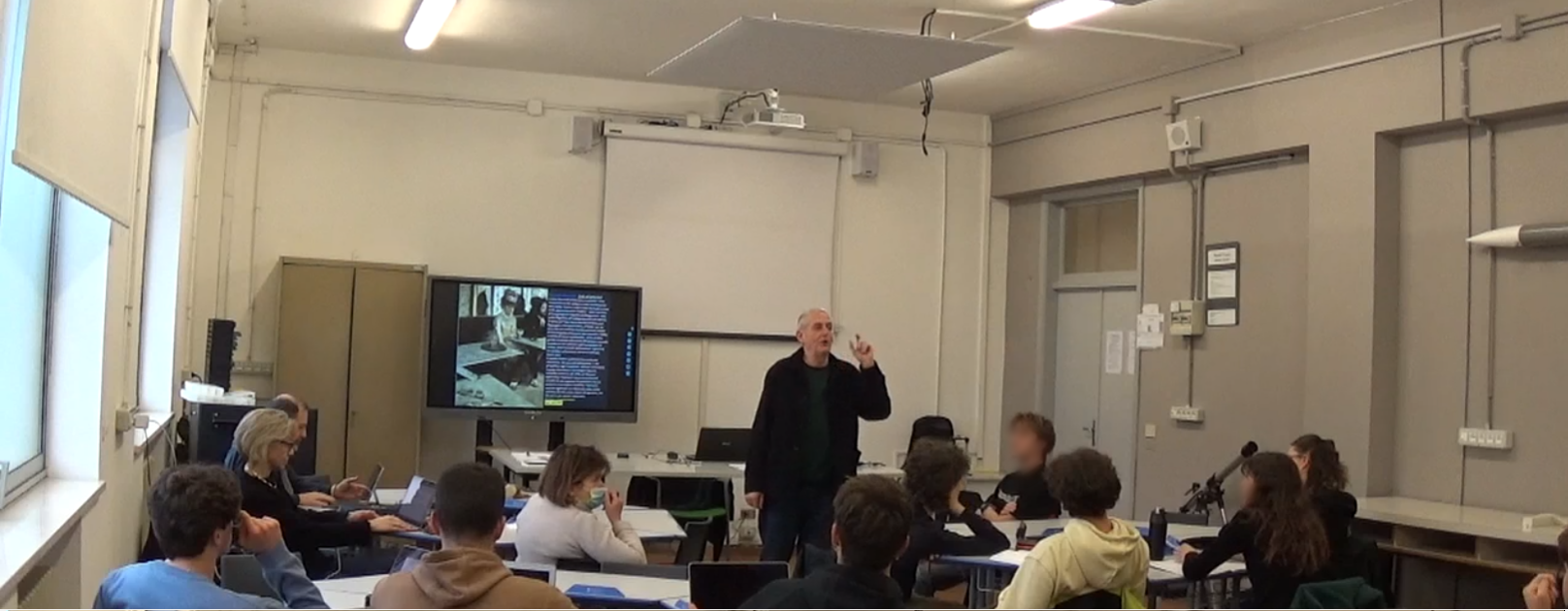
The AI atelier included three phases. In the first phase, students are introduced to the theme of creativity in human artistic thinking and in the artificial one and to some technical and critical aspects of artificial intelligence. More specifically, the first lesson, guided by Professor Giuseppucci, was dedicated to the examination of some exemplary results of human creativity in the artistic field and their comparison with some AI generated ones. In the second lesson, prof. Gianfelici presented philosophical and critical-aesthetic hypotheses highlighted over the past century regarding machine intelligence. Professors Clementi, Fantini, and Filippi intervened during those introductory moments, stimulating discussion between the participants and raising or highlighting further aspects of a scientific and technical nature in order to clarify the interpretation of AI technology. On that basis students and teachers together tried to characterise what it means, for human beings, to be creative/think creatively and confronted it with artificial processes as we know them today. The first concept raised and discussed concerned the “conditioning and consciousness of the context” that AI technologies lack in their process of creation. Discussing the relationship with the context brought to other two concepts: “limitedness”, linked to every human experience for the very fact of being at the same time “mind” and “body”; and “reality”, linked to the illusion that the impressive quantity of information, data, texts, and images, that artificial intelligences can record and manipulate, represents all the reality.
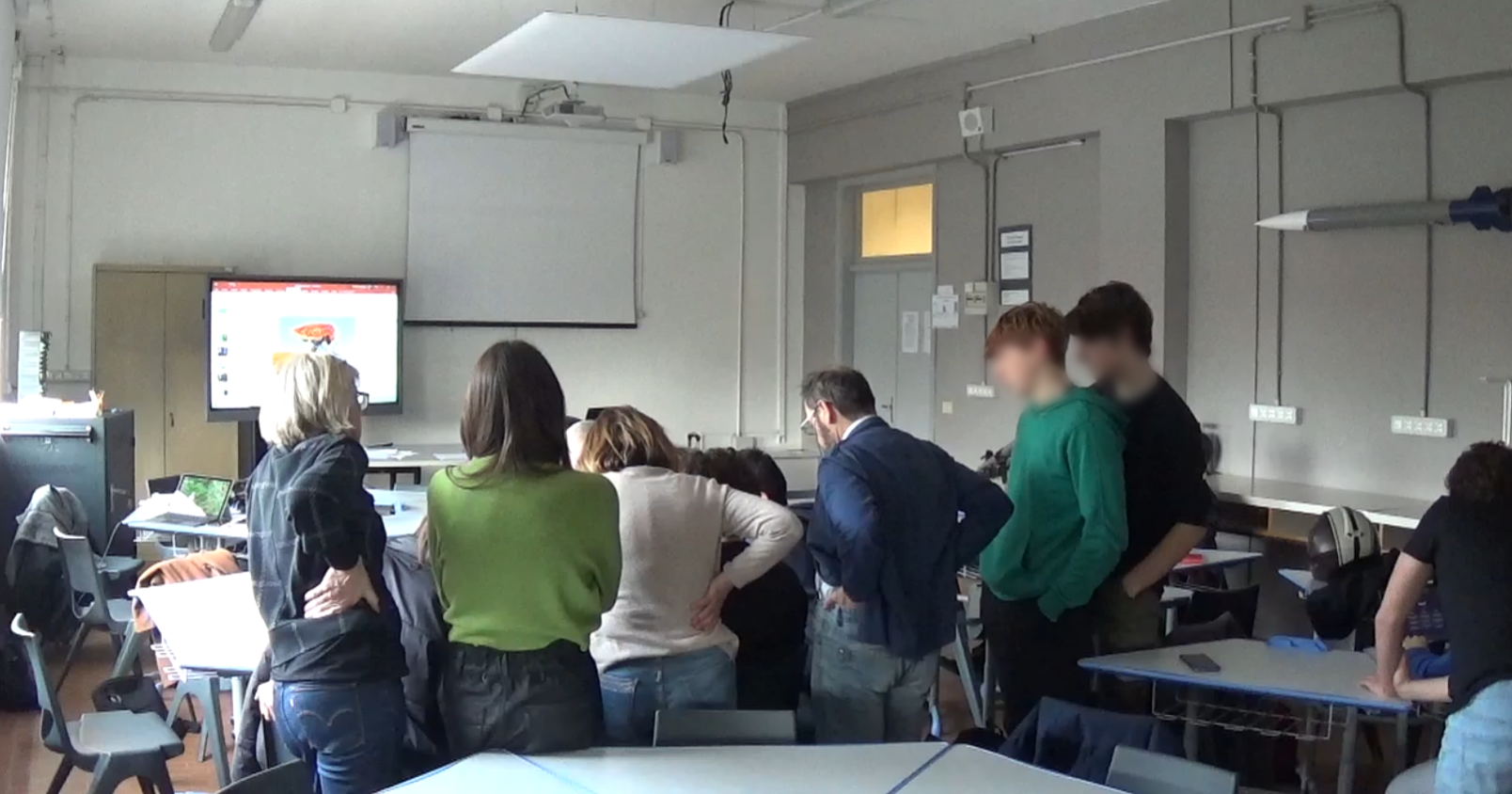
In a subsequent phase, the students were divided into groups and, assisted and advised by all professors, were invited to re-elaborate in an artistic and creative sense the concepts that had most struck them and to finally elaborate an artwork. In the last phase, in addition to considering various exhibition choices and their related communicative effectiveness, all participants were asked to draft a text about their artwork and their workshop experience.
In the following lines, there is a brief description of the artworks produced:
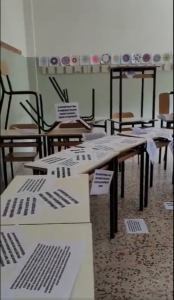
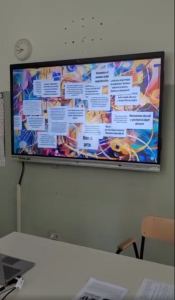
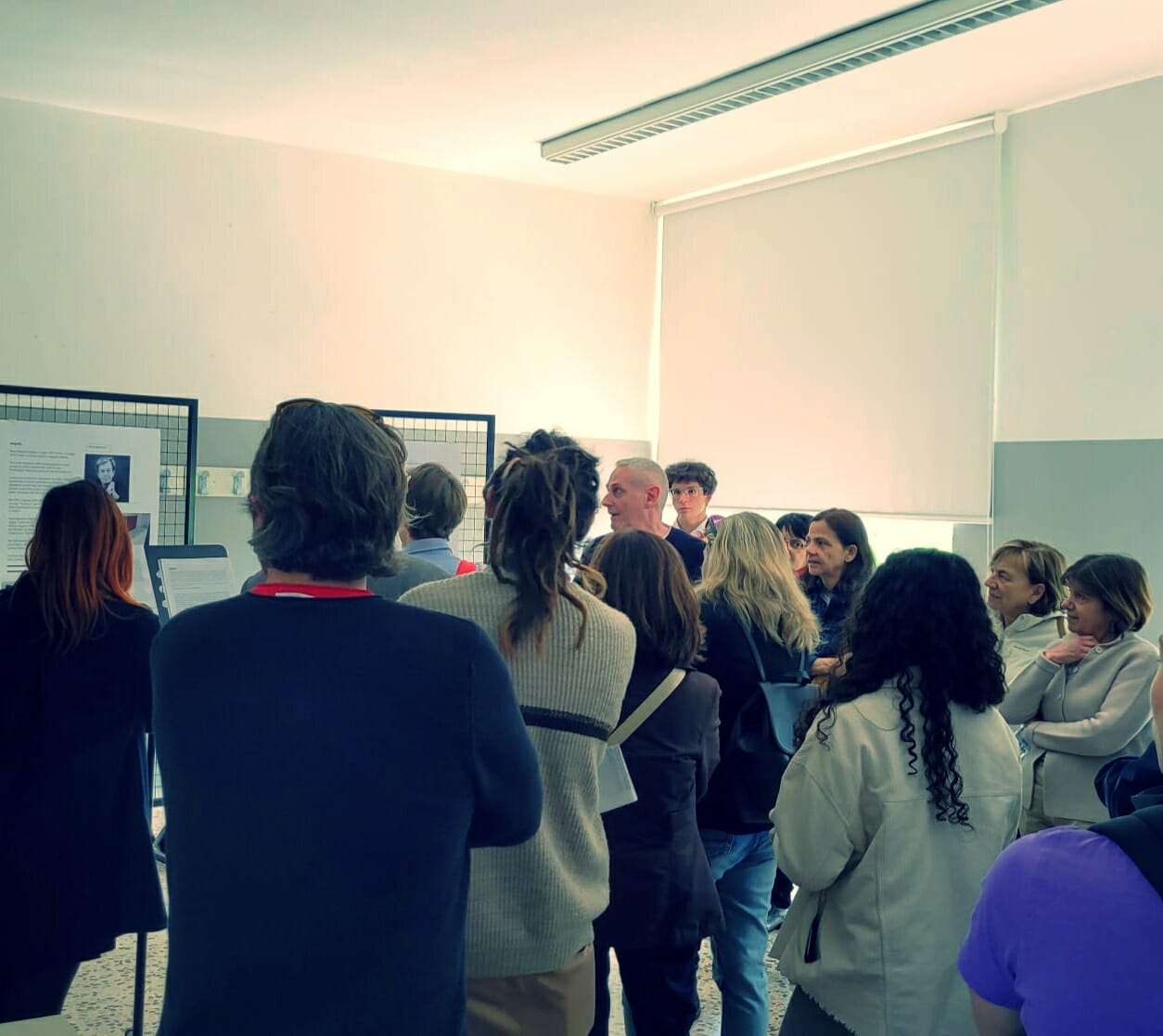
In the final exhibition, held Friday the 18th, students presented the artworks to the rest of the school, their parents, and anyone else interested.
The exhibition catalog, curated by Professor Maurizio Giuseppucci, is available at this link (the document is in Italian).
